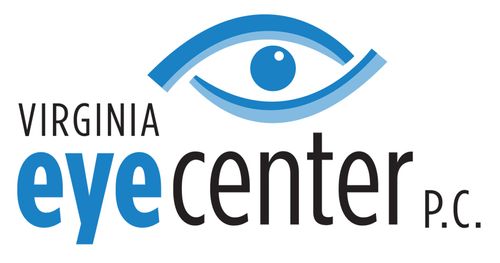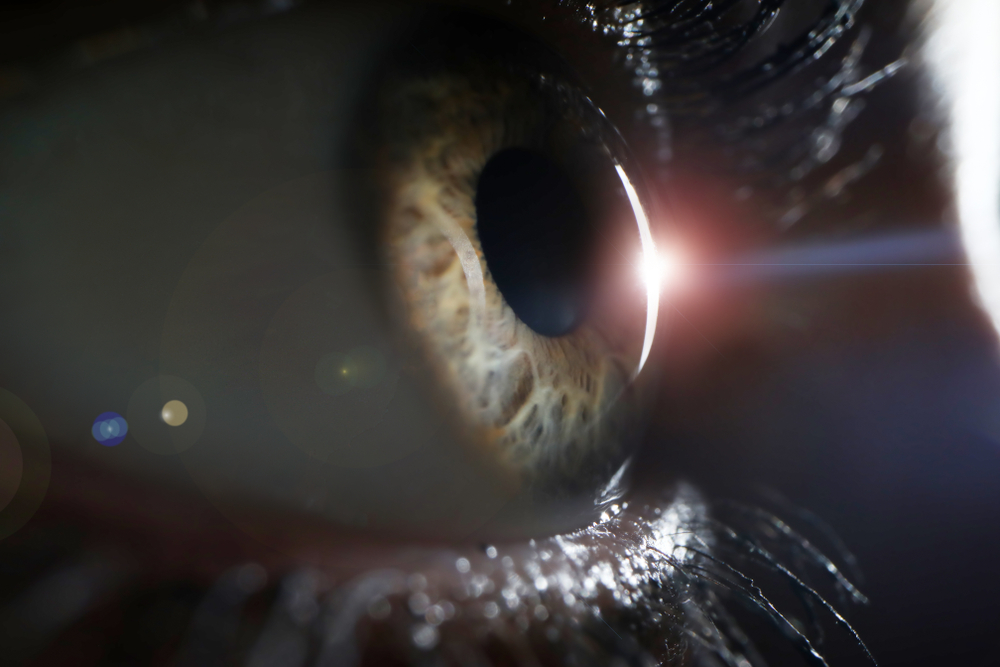
Glaucoma is a disease that affects the optic nerve, the part of the eye which receives images collected by the retina and sends them to the brain. Every eye maintains a certain amount of internal pressure, called intraocular pressure. When this pressure rises to abnormal levels, it can put extra stress on the optic nerve, causing significant damage. Optic nerve damage results in loss of vision, and ultimately blindness.
The front of the eye is constantly producing a fluid called aqueous humor. A healthy eye will continually produce small amounts of aqueous humor to ensure consistent pressure within the eye. When normal drainage becomes slowed or blocked, pressure increases, and may lead to glaucoma. There are several different types of glaucoma, the two most common types being chronic open-angle glaucoma and closed-angle glaucoma.
Chronic open-angle glaucoma is the most common form of the disease and usually develops with age. With this type of glaucoma, pressure gradually increases around the eye causing it to work less effectively over a period of time. There are no symptoms in the early stages of open-angle glaucoma. Peripheral vision is usually the first to deteriorate. As the disease becomes more advanced, blank spots begin to appear in one’s vision. If left untreated, it eventually develops into blindness. The best way to avoid serious vision loss is early diagnosis and treatment.
If you have glaucoma, your ophthalmologist may try several treatment methods to help lower your eye pressure. For some patients, medication like eye drops is not enough to manage their eye pressure.
At Virginia Eye Center in Leesburg, VA, our doctors offer our patients many options for glaucoma surgeries. Which glaucoma procedure your ophthalmologist recommends depends on the severity of your symptoms and how high your eye pressure is.
A laser peripheral iridotomy, also known as a YAG PI, is a laser procedure used to prevent angle closure glaucoma in eyes considered at risk for it such as in patients who have narrow angles. A YAG laser iridotomy involves creating a small opening in the iris to allow aqueous humor fluid to flow from behind the iris to the eye’s anterior chamber.
Selective laser trabeculoplasty (SLT) is used to lower intraocular pressure in patients with ocular hypertension or open-angle glaucoma. Selective laser trabeculoplasty helps improve how fluid drains from the eye and lowers intraocular pressure. Patients can undergo SLT more than once if pressure levels rise after the first treatment. Although some patients achieve excellent results, you may need to continue eye drop treatment after selective laser trabeculoplasty.
Your eye doctor may also recommend other treatments if your pressure needs to continue to be lowered.

MIGS refers to a subset of minimally invasive glaucoma procedures. These procedures help lower intraocular pressure using small incisions and improve the natural outflow pathways. At Virginia Eye Center, we offer the following MIGS procedures:
The Xen Gel Stent is a surgical implant that lowers intraocular pressure in patients with open-angle glaucoma. It’s often recommended if previous procedures have not been successful, or medications alone are insufficient.
The Xen Gel Stent is a small tube that becomes soft and flexible when inserted into the eye. It creates a small channel in the eye to drain fluid and lower intraocular pressure. It’s only the size of an eyelash and is placed under the conjunctiva, where it stays permanently.
Trabectome is a minimally invasive procedure for patients with open-angle glaucoma. The procedure involves creating a tiny incision in the cornea using an FDA-approved handheld device called a Trabectome. The Trabectome uses heated electrodes to remove the inner wall of Schlemm’s canal. Removing this wall allows fluid in the eye to directly access Schlemm’s canal. Many times, a trabectome is often performed at the same time as cataract surgery.
The Kahook Dual Blade is a minimally invasive outpatient procedure usually performed during cataract surgery. The device creates precise incisions in the eye’s trabecular meshwork with a single-use ophthalmic blade that releases intraocular pressure. The Kahook Dual Blade was specifically engineered to fit in Schlemm’s canal to help maintain the natural outflow pathways in the eye.
The iStent inject W is used in conjunction with cataract surgery to lower intraocular pressure in patients with mild to moderate primary open-angle glaucoma. It uses two multi-directional stents through the trabecular meshwork to restore the natural outflow of fluid through Schlemm’s canal.
OMNI is a device that targets all three points of resistance in patients with primary open-angle glaucoma. These points of resistance include the trabecular meshwork, Schlemm’s canal, and collector channels.
Using the OMNI Surgical System allows your surgeon to perform implant-free procedures that target these points of resistance with only one device. These procedures include canaloplasty by accessing Schlemm’s canal and a trabeculectomy to address the trabecular meshwork as a resistance point within the eye’s conventional outflow pathway.Using the OMNI System can reduce intraocular pressure when combined with cataract surgery to perform trabeculectomy and canaloplasty in patients with mild to moderate cases of open-angle glaucoma.
The Hydrus Microstent is a procedure that’s roughly the size of an eyelash. It’s implanted by your surgeon using microscopic incisions to control intraocular pressure. Many patients find they can reduce their need for medication like eye drops after implanting the Hydrus Microstent.
If your eye doctor recommends one of these MIGS procedures, it will depend on the severity of your symptoms and how high your intraocular pressure levels are. Many MIGS procedures are also performed during cataract surgery.
Trabeculectomy is a procedure that creates a new pathway for fluid to drain out of your eye. Allowing fluid to flow through this new pathway prevents further vision loss. A trabeculectomy creates a small flap in the eye to let fluid escape and lower intraocular pressure. This flap is created with the use of tiny, microscopic stitches that can be released in the office after your surgery to help lower your eye pressure further if needed.
Bleb revision, also called bleb needling, is a procedure most often performed after a trabeculectomy. During a trabeculectomy, your surgeon creates a new pathway so fluid inside the eye can make its way outside the eye to relieve pressure.
The tissue forming a fluid receptacle over the pathway created during a trabeculectomy is a bleb. Sometimes, when forming a bleb, the new pathway does not remain open. Instead, the body’s natural healing process begins creating scar tissue that covers the reservoir. Bleb revision or needling is an outpatient procedure used to remove this scarring and reopen the drainpipe, allowing pressure in the eye to lower and be easier to maintain.
The Ahmed Valve is an aqueous shunt implanted to drain the aqueous humor to a bleb behind the eyelid. To implant the valve, your surgeon will place a tiny silicone tube in the front of your eye. The tube is attached to a plate placed under the skin of the conjunctiva. After implanting the Ahmed valve, a bleb forms several weeks later. With the formation of the bleb, the aqueous humor can drain through the shunt to the bleb.
Fluid in the bleb then gets absorbed by your body into your blood vessels. Implanting an Ahmed valve can help lower intraocular pressure and may be able to reduce reliance on glaucoma eye drops.
If your eyes exhibit extensive scarring from previous surgeries, your eye doctor may recommend a Baerveldt implant. The implant is a glaucoma drainage device that routes aqueous humor fluid from your eye to an external reservoir. Your surgeon will place a silicone tube attached to a tiny plate in your eye.
Cyclophotocoagulation CPC is a laser procedure to lower intraocular pressure. With a laser, your surgeon can alter part of the ciliary body, which is found behind the iris. Some patients can reduce how many eye drops they need to take for their glaucoma after undergoing cyclophotocoagulation.
Micropulse P3 Cyclophotocoagulation (MP3) is a gentler form of cyclophotocoagulation. Rather than destroying ciliary body tissue, MP3 instead shrinks ciliary muscle. By shrinking the tissue, it pulls on the trabecular meshwork and Schlemm’s canal to stretch and open the eye’s drainage system to improve pressure levels.
Do you need to undergo a glaucoma procedure? Learn more about which may be best for you by requesting an appointment at Virginia Eye Center in Leesburg, VA, now!